On the 21st of June 1040, Fulk III Nerra, also known as Fulk the Black (French: Foulques le Noir), who was Count of Anjou from 987 to 1040, died at the old age of 69-70. Fulk was a powerful early ruler of the Angevin dynasty that originated in the County of Anjou.
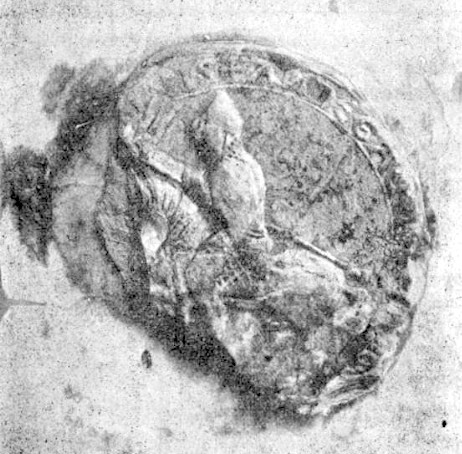
Anjou was an object of envy from the neighbors. At first, Fulk’s lands were attacked by the Count of Brittany, so he fought fiercely to drive the invaders out of his domains. He succeeded: Fulk defeated Conan I of Brittany at the Battle of Conquereux and then besieged the city of Nantes, whose citizens resisted his army. Conan fell on the battlefield, while Fulk, in spite of having been thrown from his horse, recovered and rallied his men like a rampant force of nature.
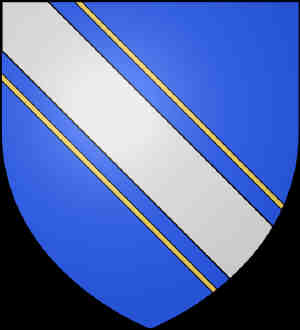
Once the western borders of Anjou were safe, Fulk’s attention shifted to his other enemy in the east – Odo II, Count of Blois (French: Eudes II). Both vassals to King Robert II of France known as the Pious, Fulk and Odo both ruled major principalities and had their own armies. Their rivalry had started under Hugh Capet, the first Capetian ruler of France. Under Hugh’s son, Robert, it intensified after Robert had repudiated his first queen, Rozala of Italy, to marry Bertha of Burgundy, widow of Count Odo I of Blois. Robert began opposing Fulk’s attempts to conquer Touraine, and Fulk retreated. Robert’s alliance with William V the Great, Duke of Aquitaine and Count of Poitou, was a blow to Fulk until these two men made peace in 1100.
Fulk Nerra made four pilgrimages to Jerusalem. During one of them, Odo started the conflict over the territory of Saumur and a large part of Touraine. Lady Fortune smiled upon Fulk after his return: King Robert was excommunicated by Pope Gregory V for marrying Bertha, his second cousin, because of consanguinity, so the monarch had to part with his wife. His next consort became Constance of Arles, who was the daughter of William I, Count of Provence and Adelaide-Blanche d’Anjou, daughter of Fulk II d’Anjou and a cousin to Fulk Nerra.
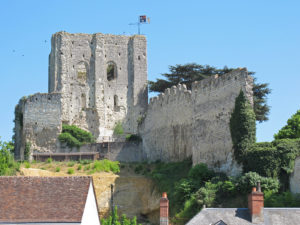
This allowed the relationship between Fulk and the king to improve, despite Robert’s marital problems with Constance. Seizing the opportunity, Fulk advanced east at the expense of Odo, building new castles in the process. As Fulk constructed strongly fortified castles made of stone instead of wood along the borders of his territories, including those lands he conquered, he was labeled ‘Le Grand Bâtisseur’, or ‘The Great Builder’. Fulk’s first castle was at Langeais, east of Angers, on the banks of the Loire River, which would later become Château de Langeais. Fulk also erected towers and fortresses around Tours: Montbazon, Montrésor, Mirebeau, Montrichard, Loches, and Montboyau. The fortresses at Angers, Amboise, Chateau-Gontier, Chinon, Mayenne, and Semblançay were all rebuilt and/or fortified upon Fulk’s orders.
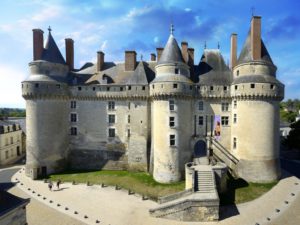
Fulk was incensed that Hugh, Count of Beauvais, endeavored to make Robert repudiate his relative, Constance, which was not beneficial for the House of Anjou. Thus, Fulk’s knights had Beauvais murdered in 1008, for what Fulk was threatened with excommunication, which resulted in his another pilgrimage to Jerusalem in order to seek for forgiveness. Despite Robert’s attempts to rejoin Bertha, the Pope disapproved of this, so the king returned to Constance, with whom he fathered several children. After his return, Fulk reconciled with King Robert in 1016.
Although Odo was no longer allied with the King of France, he continued his struggle against Fulk. The war broke out again when Fulk made an alliance with Herbert I, Count of Maine, known as Wakedog. Odo was en route to attack the fortress of Montrichard, but his intentions were figured out by both Fulk and Herbert, who split their forces to block the possible two approaches. At the Battle of Pontlevoy (one of the largest battles of early medieval France), the balance of power in the Loire Valley was finally determined – Odo was crushed and fled in haste.
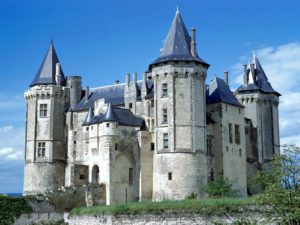
In 1021, after the death of Stephen de Vermadois without any heir, the future of counties of Meaux and Troyes, became uncertain. Fulk decided to press his claim to these lands, just as Odo did. At first, King Robert decided to support Odo, but then he changed his mind, and a conflict escalated. Now resentful towards his king and Fulk, Odo sought reconciliation with Robert, but failed. Robert was openly allied with Fulk against Odo, but in 1026 the Count of Blois besieged Montboyau. Fulk’s quick response was the annexation of Samur, and he then defeated his foe near Amboise. According to their peace treaty, Fulk kept Samur, but Montboyau was destroyed.

By 1020, Fulk possessed much of northern Poitou and erected the fortress of Moncontour to strengthen his power there. He even moved into Berry – an area of royal interest. This made Fulk dangerously powerful, and his relationship with the French Crown soured again. Fulk had the reputation of a ruthless warrior who burned and pillaged cities, towns, and monasteries in his path, so the Count of Anjou continued his ordinary policy to accumulate more power in the region of the Loire Valley while also surprisingly feeling the need for penance. The latter made Fulk found and restore several abbeys, including those in or near Angers, Loches, and Saumur.
In his personal life, Fulk was as brutal as he was in politics. His first wife was Elisabeth de Vendôme, daughter of Count Bouchard de Vendome, with whom Fulk had a daughter – Adèle. Nonetheless, Fulk was extremely cruel to his spouse: he accused Elisabeth of adultery with a local farmer, and, before checking the veracity of the accusation, she was burned at the stake. Fulk’s second marriage to Hildegarde de Sundgau was more peaceful and produced his male heir– Geoffrey II, Count of Anjou, called Martel, or ‘the Hammer’. Hildegarde also birthed a daughter – Ermengarde-Blanche, who was a female ancestress of the Angevin dynasty.
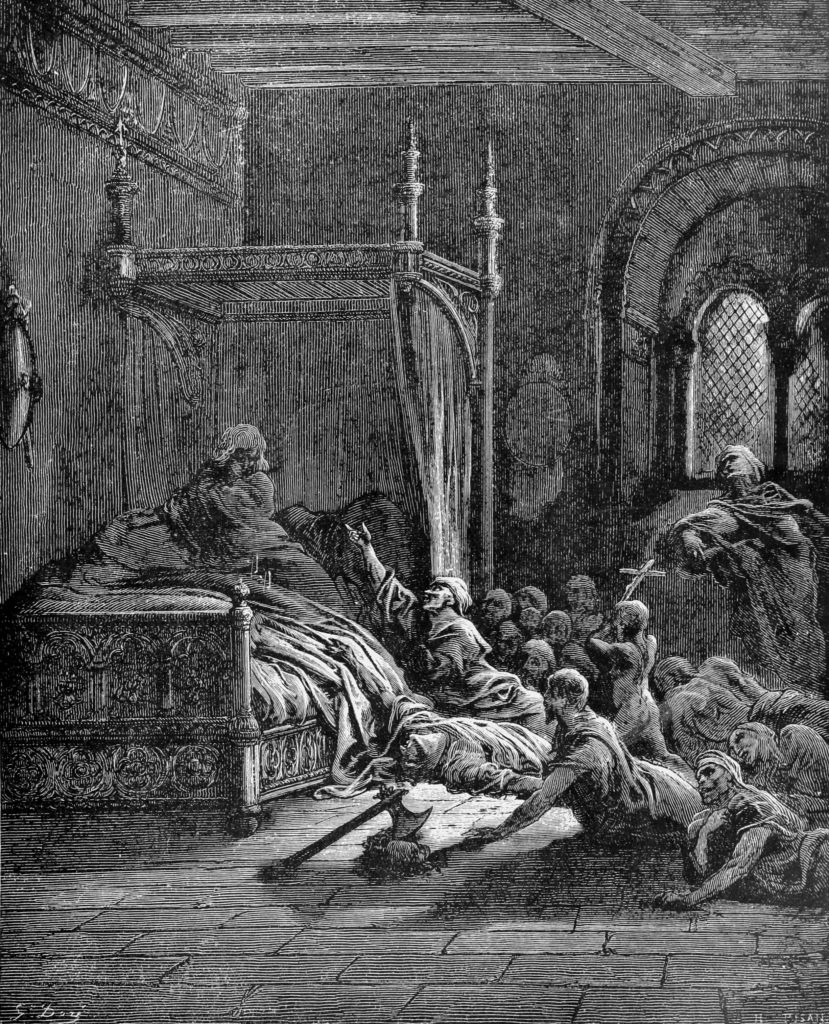
The historian Henry Fichtenau wrote of Fulk Nerra:
“Fulk of Anjou, plunderer, murderer, robber, and swearer of false oaths, a truly terrifying character of fiendish cruelty, founded not one but two large abbeys. This Fulk was filled with unbridled passion, a temper directed to extremes. Whenever he had the slightest difference with a neighbor he rushed upon his lands, ravaging, pillaging, raping, and killing; nothing could stop him, least of all the commandments of God.”
Fulk Nerra was a brilliant politician, yet quite a nasty man as well. As a count, he stopped at nothing to increase his domains and defend his interests. As a husband, he could be absolutely savage even in accordance with Medieval standards when violence was part of everyday life. One of the greatest Angevins, Fulk was the first of them in whom we can trace that intemperate and ruthless type of character which would be displayed in some of the later Angevin rulers, Fulk’s descendants. Nonetheless, it is obvious that some of Fulk’s actions (burning his wife at the pyre) would have shocked many of his descendants during the times of the early Plantagenets.
All images are in the public domain.
Text © 2020 Olivia Longueville


Good day to you!
So, I’m watching a documentary about the development of European castles, and this guys name came up. And I immediately recognized the name from my genealogy research. I think, “how many dudes were named Fulk in this era? Is this guy related to the Fulk D’Anjou who is one of my great grandfathers?” And yes, he most definitely is.
And then I think about my temper when I was a younger man… and it’s like, “aaaahh, right… thanks gramps!”
Hello! Thank you for your comment, and I’m sorry for the belated response. I’ve been going through a highly stressful year of my life following my father’s death, and so many things, including my online activities, have literally stopped for me.
I’m not sure how many Fulks there were in that area. But he of course can be your ancestor. If you have a hot temper, then it can be an indirect sign that it is so)))
I hope you are doing okay now. By the way, we intend to publish a sequel to my first novel of Anne Boleyn and François I (alternate history) in early 2023.